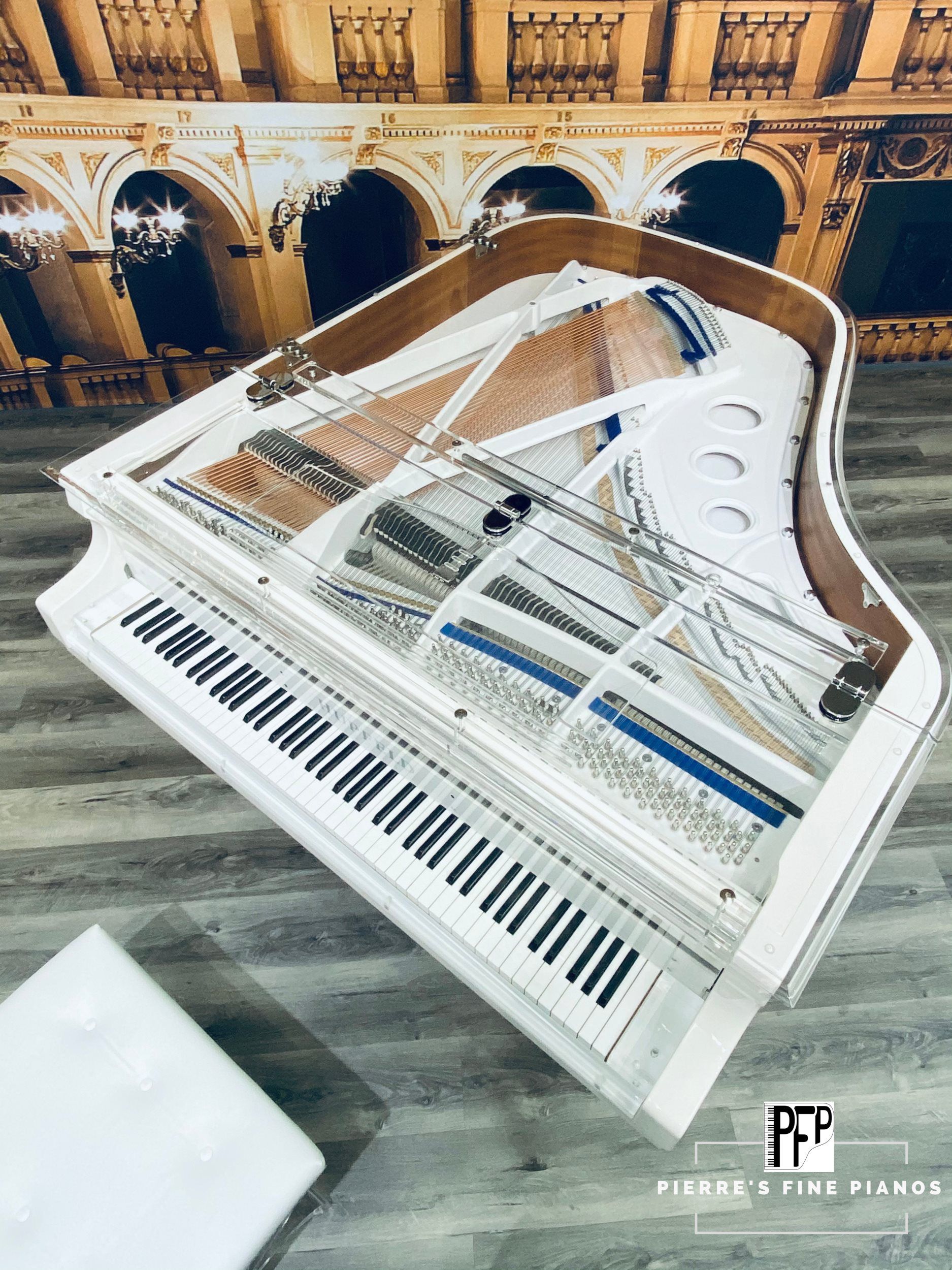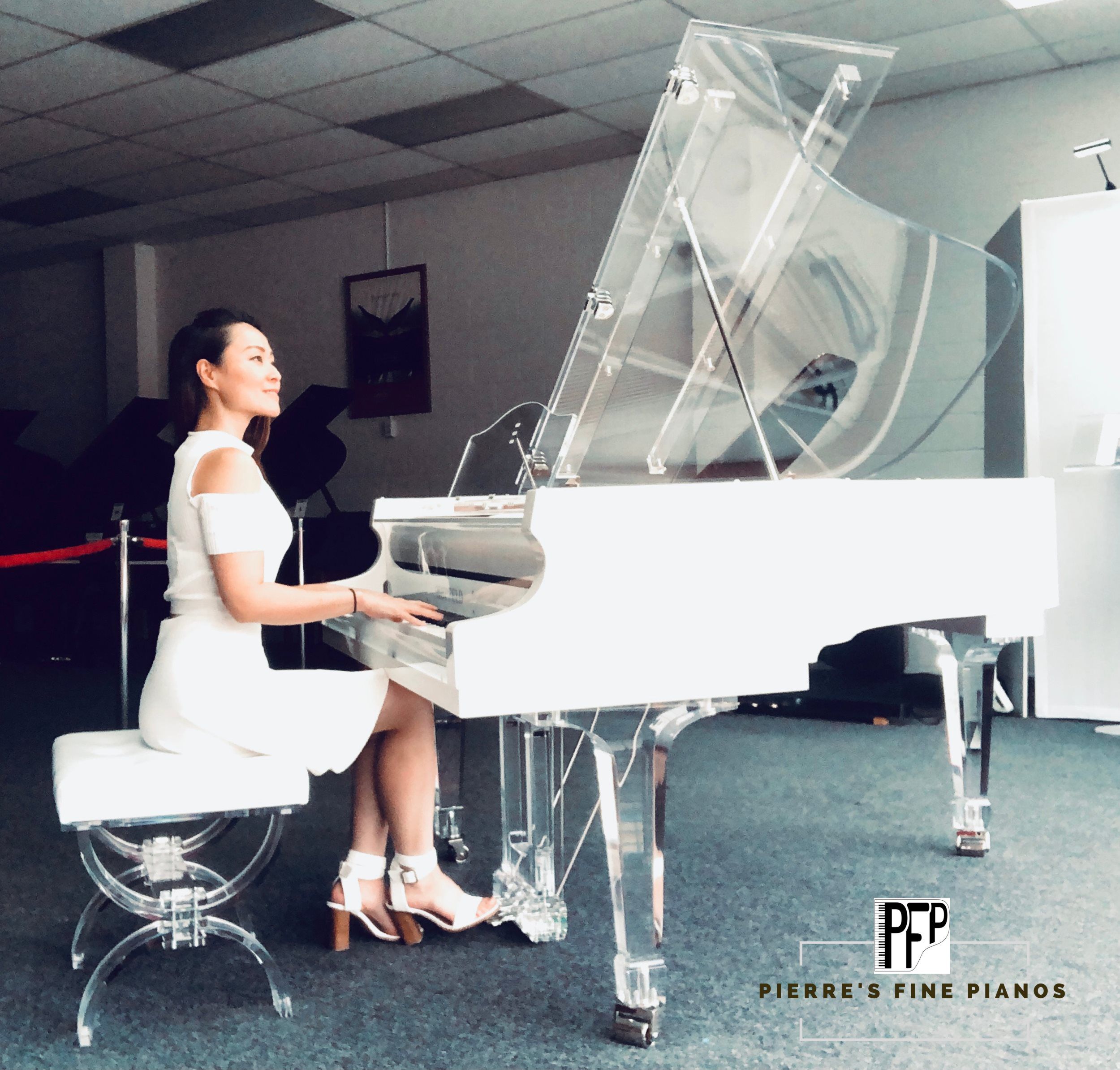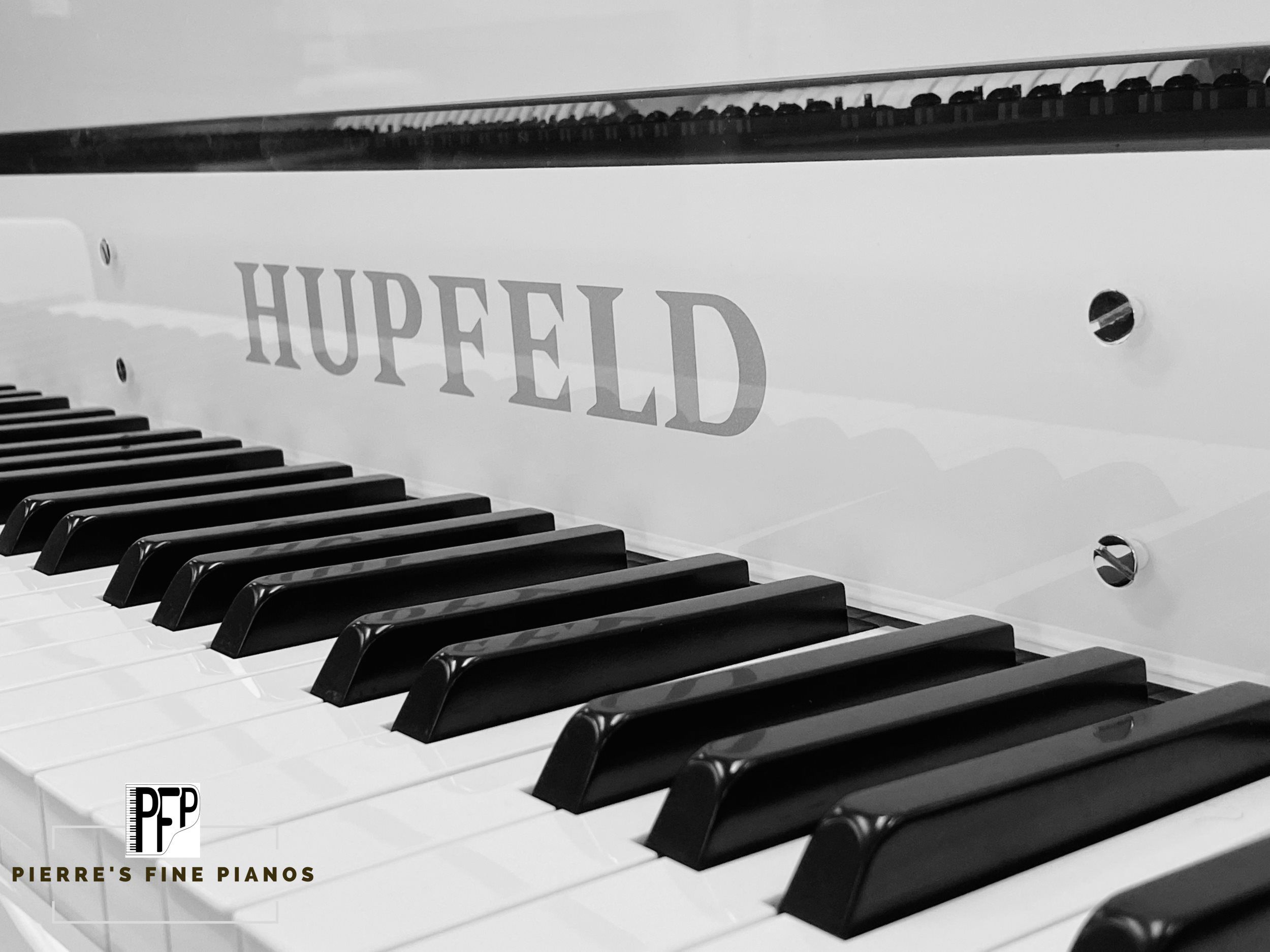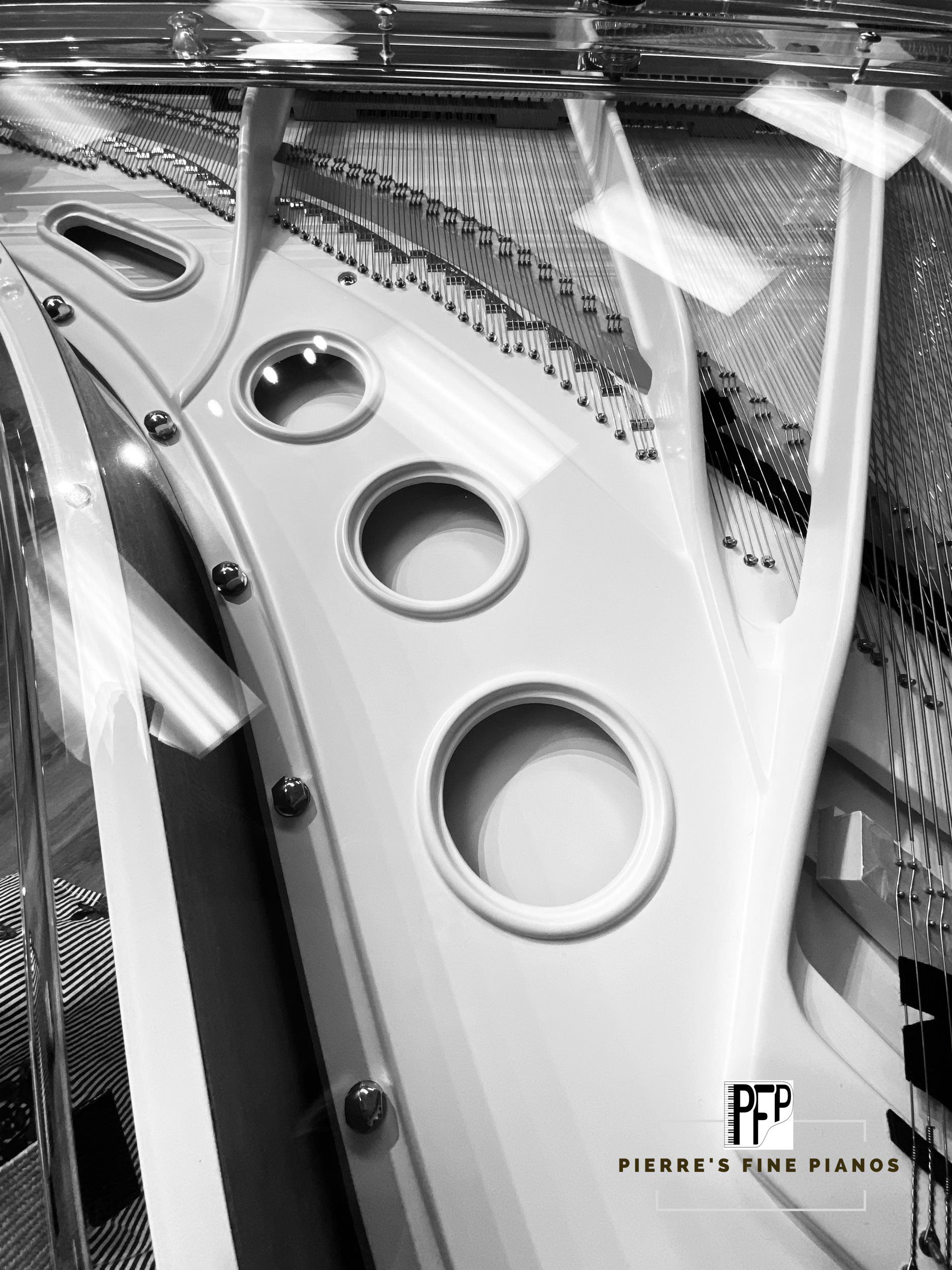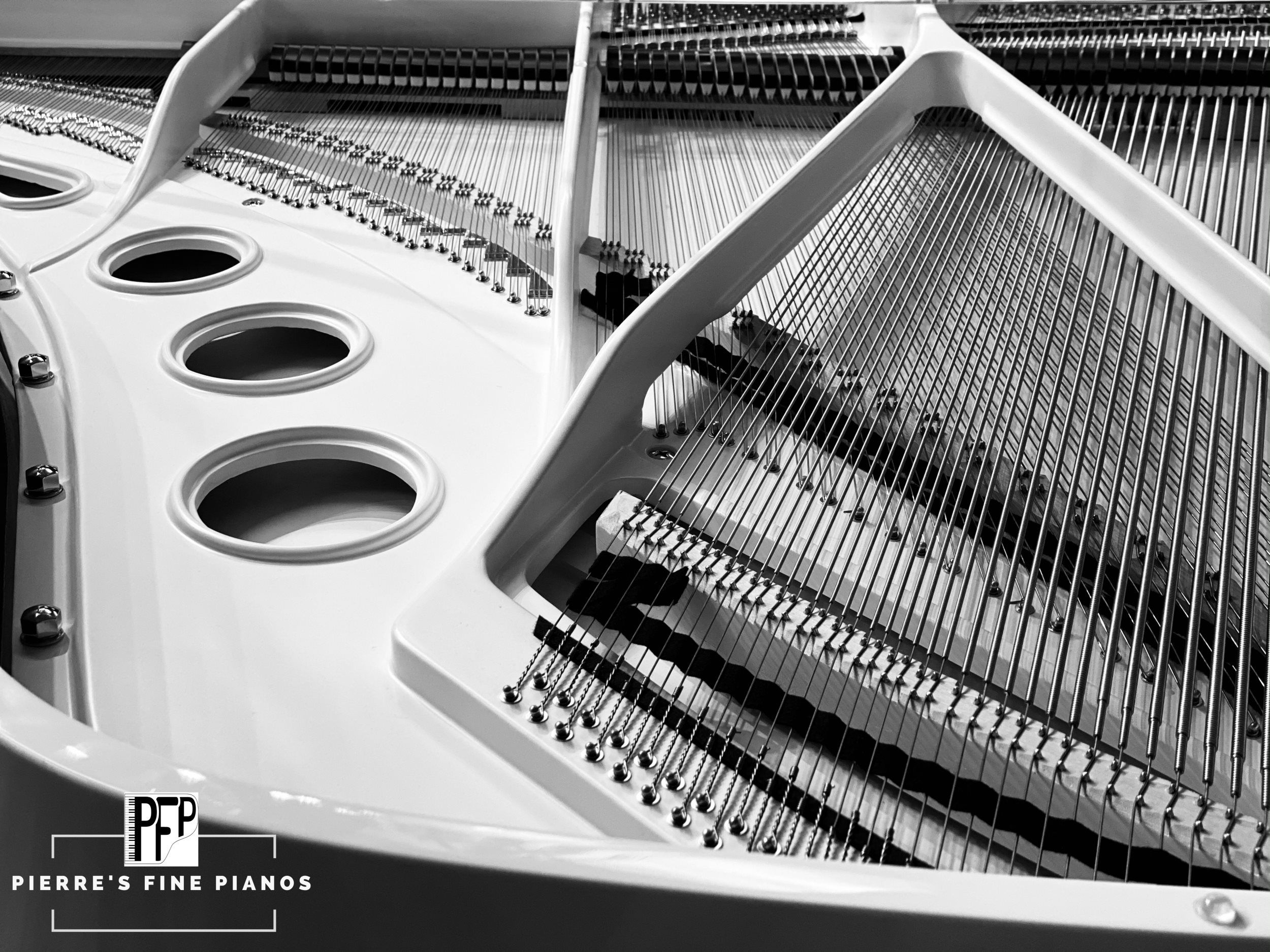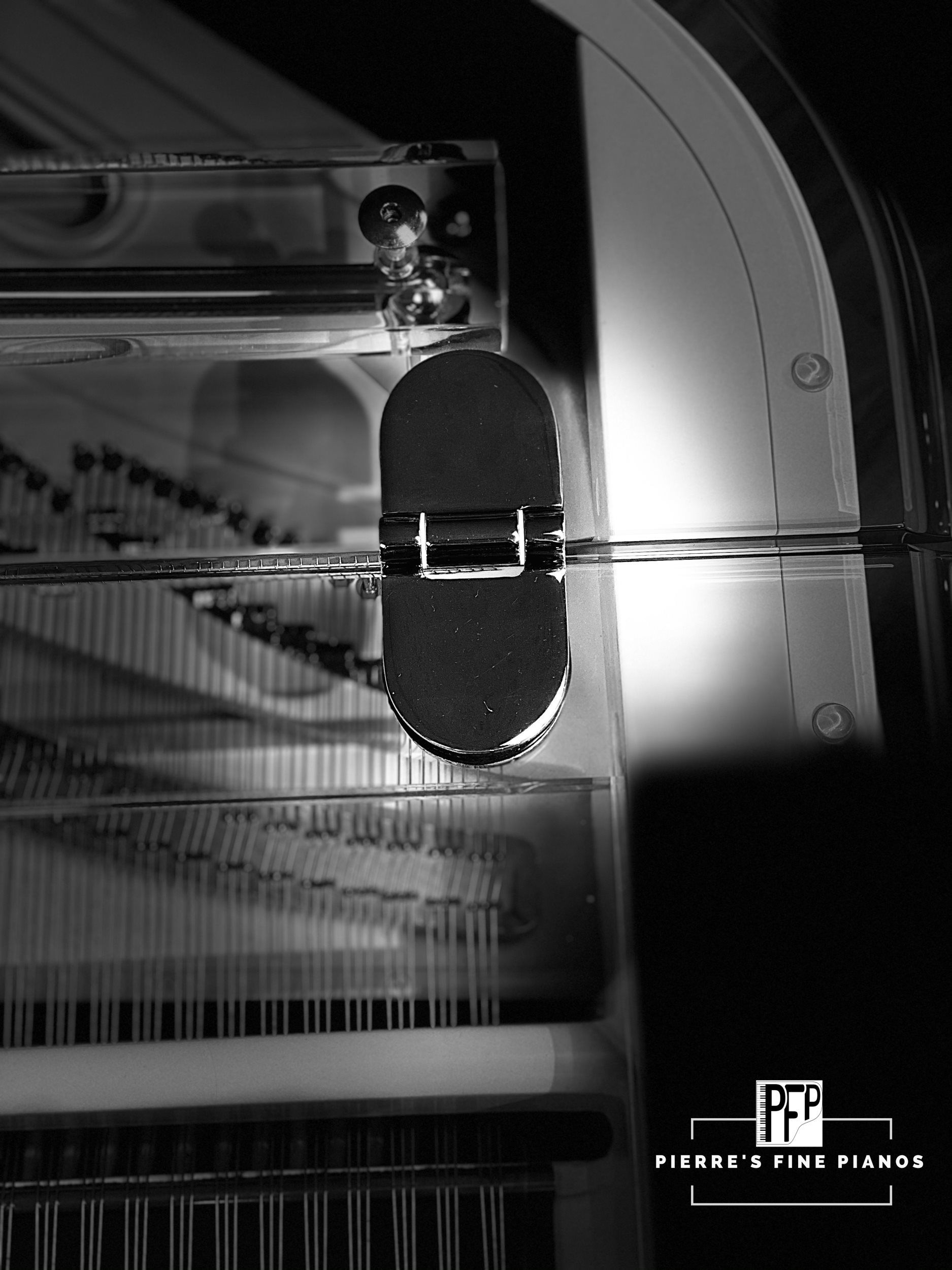Hupfeld Translucid Transparent/Crystal Grand Piano for sale
Since 1892
sTYLISH dESIGNER PIANOS wITH GERMAN TECHNOLOGY AT AN AFFORDABLE PRICE
Every Hupfeld instrument unfolds the opportunity to experience years of musical enjoyment and virtuosity. Thanks to the team of experienced craftsman, the handmade instruments of the Hupfeld series offer unmatched quality at an affordable price.
Hupfeld pianos impress with their subtle refinement and exceptional tone. Hupfeld stands for fine pianos of a traditional build philosophy, designed and finished by the Rönisch factory in Leipzig, Germany.
TRANSLUCID
GRAND PIANO
The transparent grand piano is built by hand from selected high-quality materials, implementing cutting-edge technologies, to creating unique instruments with astonishing touch and tone.
Model: HU 175 E TRANSLUCID
Dimension:
175 cm x 151 cm x 102 cm
69 inch x 60 inch x 40 inch
Expert's Comment:
Are you looking for a centerpiece to highlight your home, design projects, private yachts, hotels, or clubs? Hupfeld Translucid Crystal Grand Piano can transform your space with a "Bling!"
Owning a German-quality piano without paying a premium, welcome to modern luxury with a high-performance and highly efficient lifestyle. It's just perfect!
HISTORY
HUPFELD FACTORY IN 1911 IN BÖHLITZ-EHRENBERG, LEIPZIG, GERMANY
* Ludwig Hupfeld was born on November 26, 1864 in Marberzell near Fulda, Germany.
* He graduated the royal academy at Fulda and completed his 3 year apprenticeship in Köln.
* In 1892 Ludwig Hupfeld bought the J.M. Grob & Co. in Leipzig, who developed their first mechanical keyboard instrument in 1897.
* in 1894 Hupfeld first built Orchestrions in Leipzig, compact chamber organ instruments.
* In 1899 the first factory was built in Leipzig at the Berliner train station.
* In 1902 the "Phonola" was developed, employing a pneumatic system.
* In 1904 the "Phonoliszt" became the first electronic piano with a synthetically nuanced performance.
* In 1904 Hupfeld was converted to a limited company.
* In 1907 the "Phonoliszt-Violina" became the first player piano-violin duo instrument in the world.
* In 1910 the Hupfeld House was built with a concert hall and showrooms for 200 instruments.
* In 1910/1911 The new factory in Böhlitz-Ehrenberg was built with 1,300 employees.
* In 1912 King Friedrich August of Sachsen made an official visit to the Hupfeld factory.
* After World War 1 the factory resumed its traditional production with a 50 % export trade.
* In 1918 Hupfeld purchased Carl Rönisch Pianos of Dresden with a yearly production of 3,000 pianos.
* In 1920 Hupfeld purchased A.H. Grunert of Johanngeorgenstadt, with a yearly production of 2,000 pianos.
* In 1924 Hupfeld purchased the Steck company in Gotha with a yearly productions of 6,000 pianos.
* The network of Hupfeld owned sales branched stretch worldwide: Dresden, Berlin, Cologne, Düsseldorf, Wien, The Haag, Amsterdam, London, Barcelona, Turin, Buenos Aires.
* 1925 Fusion with the Gebr. Zimmermann AG Leipzig.
* 1926 The Leipzig Pianoforte and Phonola Factories of the Hupfeld - Gebr. Zimmermann AG Company became the largest enterprise of its kind in Europe with over 20,000 instruments in production yearly.
* 1929 the effects of the world economic crash and the rise of records and radio ended the further development of the traditional electric player piano.
* In 1930 Piano production was moved to a smaller factory while the main production shifted to such popular products as film projectors, record players, radio recievers, billiards and home furniture.
* In 1946 Ludwig Hupfeld was ousted. The Leipziger Pianofortefabrik was founded.
* In 1947 Günter Hupfeld, the only son of Ludwig Hupfeld, assisted in developing the smaller upright pianos.
* In 1949 Ludwig Hupfeld passed.
* In 1954 production was recorded at 710 instruments per year.
* In 1960 2,000 instruments per year were being produced.
* In 1964 the yearly production rose to 4,170 upright pianos and 144 grands through industrial production methods.
* In 1967 the Deutschen Piano-Union Leipzig was founded from the merger of two piano factories and an action manufacturer.
* In 1985 an expansive growth phase concluded with a yearly production of 21,000 uprights and 1.300 grands.
* In 1987 the former Hupfeld-Fabrik once again became the largest piano producer in Germany with 8,060 pianos per year. 80% were exported world-wide.
WHY HUPFELD?
Transforming tradition to modernization, cultivating luxury with efficiency and caring for the world and our community makes us happy.
Pierre's Fine Pianos works tirelessly to evolve the world of music by providing affordable and high-quality pianos to families, teachers, and design and music-savvy professionals.
Because we believe in the power of music!


